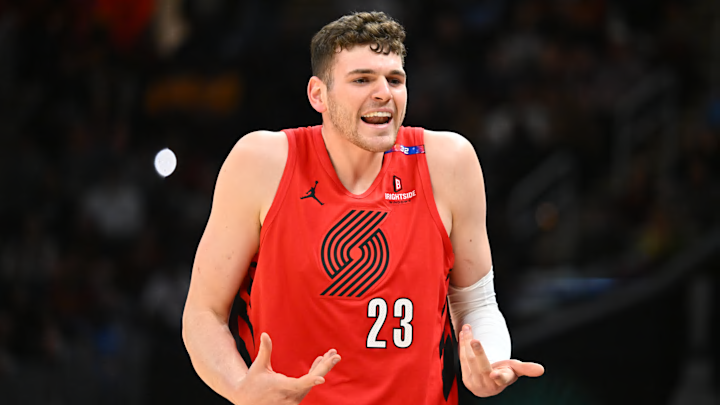NBA teams had some level of success with double-big lineups, most notably the Houston Rockets in the playoffs with Alperen Sengun and Steven Adams. However, that only works in stretches and for particular matchups. Ultimately, the pace and space style of play in the modern NBA has transitioned away from playing Twin Towers. That spells trouble for the Portland Trail Blazers, considering they just spent consecutive first-round picks on centers.
Blazers' Twin Towers experiment is doomed to fail
Donovan Clingan and Yang Hansen have complementary skillsets, which will bode well for Portland in terms of spelling one another. They provide the Blazers with two different dimensions: Clingan as an elite rim protector to anchor a top ten defense, and Hansen as an elite passing big to serve as a hub for a stagnant and lackluster offense.
In the short term, Hansen is the ideal player to bring off the bench for Clingan, and this center logjam is more of a luxury rather than a problem for Portland. It allows the Blazers to evaluate Hansen against better competition and see how genius or foolish their unconventional first-round pick really was.
It also provides them insurance at the center position following Deandre Ayton's buyout. Clingan stepped up as the starting center in Ayton's absence last year; still, he has yet to prove he can effectively maintain that role for an entire regular season, especially given concerns about his conditioning.
Clingan or Hansen? Portland will eventually have to decide
Eventually, the Blazers will have more clarity surrounding these questions, and they'll have to make a key decision on which center to build around. Keeping both on the roster long-term is poor asset management, considering they can't play together, which diminishes each player's value.
Both bigs have shown flashes of eventually becoming capable floor spacers, notably Hansen, who shot 4-of-12 from deep in Summer League. But even if they do fix the obvious floor spacing issue, playing two flat-footed centers together doesn't align with Portland's identity.
Who is consistently going to guard a power forward out on the perimeter? The Blazers are an athletic, versatile, and defensive-minded team. They thrive off getting stops that lead to transition opportunities. That all goes down the drain with two slow centers sharing the court.
Chauncey Billups doesn't envision the two centers playing together. He should still try experimenting with it because Portland needs to find creative solutions to a mediocre offense. But he'll likely be forced to pivot away from it, just like the Blazers will have to with their overall roster construction.
